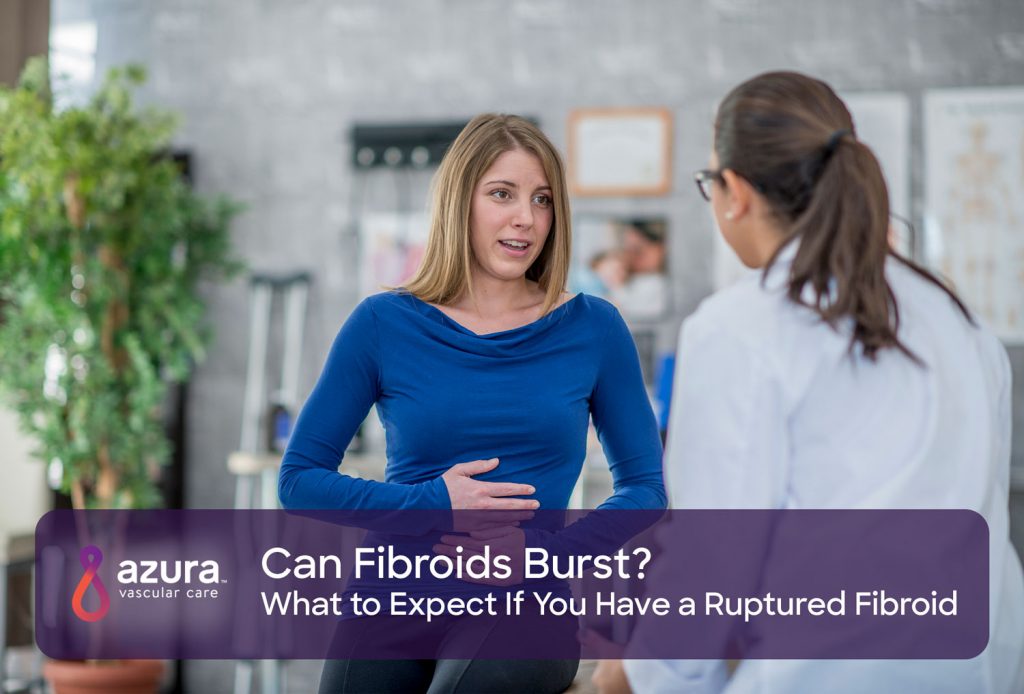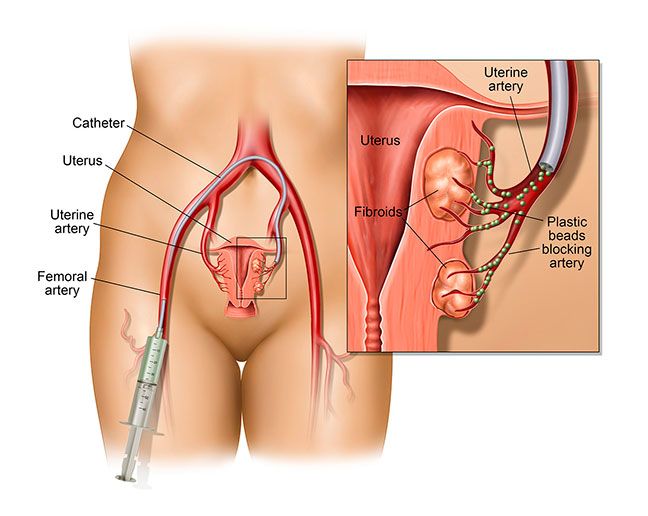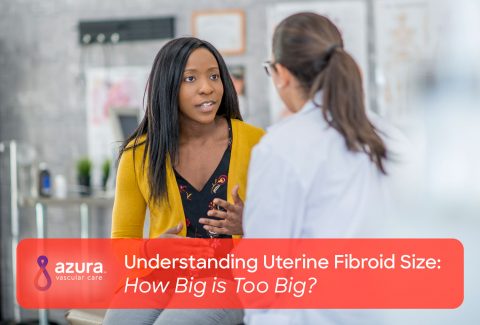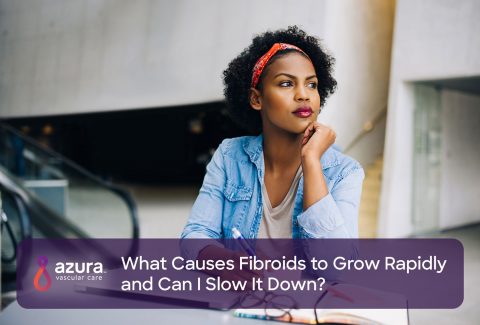
While uterine fibroids are common, a ruptured fibroid is rare. In fact, only about 10 cases have been reported in the last five years. (i) However, a ruptured fibroid is a very serious medical condition that requires emergency care.
Symptoms of a Ruptured Fibroid
Uterine fibroids depend on estrogen to grow, so they become less likely to grow in women who have reached menopause. (ii) Although typically not dangerous, uterine fibroids can cause discomfort.
In very rare cases, fibroids can burst or degenerate. Fibroids that grow on small stalks inside or outside the uterus are more likely to rupture than those that grow in the wall of the uterus or develop within the uterine cavity. (iii)
The symptoms of a ruptured fibroid include: (ii)
- Acute abdominal pain
- Low-grade fever
- High white blood cell count
Significant bleeding from a ruptured fibroid is highly unusual. (i)
What Causes a Ruptured Fibroid?
The rare occasion of a uterine fibroid rupturing can be related to: (i)
- The fibroid growing larger than the blood supply can feed
- An increase in abdominal pressure
- An injury that causes the fibroid to tear away from the uterus
- Twisting of a fibroid that has grown from a stalk-like structure in the uterus
- Increase in blood pressure in veins during pregnancy
The reasons a fibroid may burst aren’t completely understood, but researchers believe that hormones play a role. (i)
In one case, a 55-year-old woman in the beginning stage of menopause developed a fever and severe pain in her pelvic area. Doctors felt a tender mass and ordered an ultrasound of the pelvis and CT scan of the abdomen and pelvis. The imaging studies found a 12-centimeter mass growing from the rear wall of her uterus. Doctors concluded that she had a uterine fibroid that had ruptured. (iv)
Treating Fibroids Before Symptoms Become Severe
If you have been diagnosed with uterine fibroids and have not yet sought treatment, you may want to seek medical care before your symptoms become more severe or your condition becomes serious.
 There are several options for treating uterine fibroids. In addition to medication, other treatments for uterine fibroids include:
There are several options for treating uterine fibroids. In addition to medication, other treatments for uterine fibroids include:
- Uterine fibroid embolization (UFE), which blocks blood supply to fibroids, causing them to shrink and die
- MRI-guided ultrasound treatment, which uses ultrasound waves to shrink fibroids and reduce heavy bleeding
- Myomectomy, which is a surgical procedure to remove symptom-causing fibroids through an incision in the abdomen
- Hysterectomy, which is an operation to remove the uterus
Although a uterine fibroid rupture is rare, timely diagnosis and rapid emergency care can be life-saving in situations like these.
Treatment for ruptured fibroids first focuses on stopping the bleeding and ideally saving the uterus, particularly in younger women. (iii) Experts suggest emergency uterine fibroid embolization. (iii)
Uterine fibroid embolization, also known as uterine artery embolization, is a safe, effective, minimally invasive procedure that can be performed in an outpatient setting. The procedure typically lasts about an hour with mild sedation. Some of the advantages of a UFE procedure include preserving the uterus, lower risk of complications compared to myomectomy or hysterectomy, and a shorter recovery period compared to surgery.
To learn if you’re a candidate for UFE, download our free information sheet, Understanding Uterine Fibroid Embolization, or call 844-UFE-CARE (833-2273) to schedule an appointment with a vascular specialist.
Sources:
(i) Melissa Schwartz and Kristin Powell, “Spontaneous Rupture of a Leiomyoma Causing Life-Threatening Intra-Abdominal Hemorrhage,” Case Reports in Obstetrics and Gynecology, vol. 2017, Article ID 3701450, 3 pages, 2017. https://doi.org/10.1155/2017/3701450.
(ii) Shrestha, R., Khanal, R., Aryal M.R., et al. Fibroid degeneration in a postmenopausal woman presenting as an acute abdomen. Journal of Community Hospital Internal Medicine Perspectives. 2015;5(1):10.3402/jchimp.v5.25917. doi:10.3402/jchimp.v5.25917.
(iii) Fontarensky, M., Cassagnes, L., Bouchet, P., Azuar, A., Boyer, L., & Chabrot, P. (2013).Acute complications of benign uterine leiomyomas: Treatment of intraperitoneal haemorrhage by embolisation of the uterine arteries. Diagnostic and Interventional Imaging, 94(9), 885-890. doi:10.1016/j.diii.2013.01.021
(iv) Seet, M. J., Chonkar, S., & Mathur, M. (2014). An unusual presentation of a ruptured degenerative fibroid in a perimenopausal woman. Case Reports,__2014(Dec09 1). doi:10.1136/bcr-2014-207473


